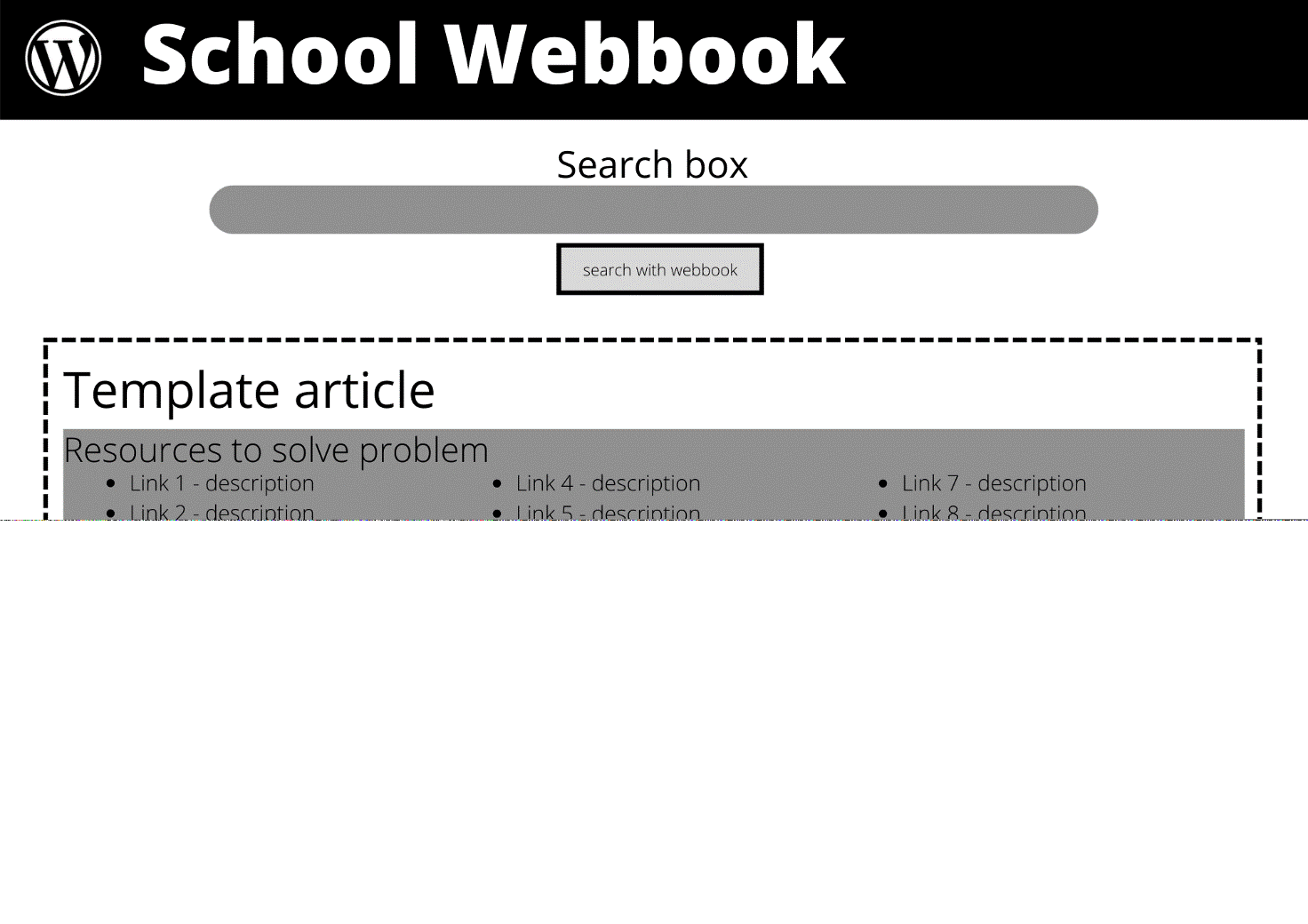UNIT 3: WordPress
What is it?
WordPress is a content management system (CMS) that allows the users to host and build websites. WordPress contains plugin architecture and a template system, to customize any website to fit a business, blog, portfolio, online store or repositories.
Why use it?
WordPress will allow us to manage content, through the creation of structured, indexed and searchable articles for use in future works, which will act as the repository we intend to disseminate.
Practical Activity
Purpose:
Using the Problem-Based Learning – PBL methodology, a problem is presented to the students. As a group, they organize their ideas and try to solve it with the knowledge they already have about the subject in question. In this way, they assess their knowledge and define the nature of the problem. Through group discussion, students develop questions or learning questions about aspects of the problem under study.
Task Overview:
A problem is presented to the students by the teacher. Students, in groups, organize their ideas and try to solve it. Through group discussion, students develop questions or learning questions about aspects of the problem under study.
An article/issue is started in WordPress, accessible to all workgroups, with a link to resources related to the problem proposed. The questions are noted by the different groups in the article/issue. Students are continually encouraged to define what they know and, above all, what they do not know about the problem.
Students organize and rank the learning issues raised by the group in the article created in order of importance and decide which issues will be investigated by the whole group and which will be asked individually and later shared with the rest of the group. The students and the teacher can also discuss what resources are needed in the investigation phase, taking into account the learning issues.
As a group, students explore the learning issues, integrating new knowledge to try to answer the starting problem. At this stage, students must synthesize their new knowledge, document it in the WordPress article and relate it to what they already knew.
Target students: 13-18 years old
Time: 200’’
Materials and Resources: tablets, smartphones and others; software application: WordPress
Exploring the task in the classroom:
After defining the problem clearly, the teacher should discuss with the students the concepts necessary to solve the problem. The teacher had provided a template for an article in WordPress, with prior information (resources on the subject in question) that would help students solve the problem. The analysis of the problem involves asking, explaining, formulating hypotheses and the new information collected must be synthesized, presented and documented in the WordPress article. Students will be able to use other articles previously published in the word WordPress press repository to increase their knowledge. All repository information should be easily accessible (indexed) through metadata search.

Figure 4 – WordPress repository and template article [link canva]
Assessment
After finishing the work and finding a solution to the problem, the students evaluate themselves and in pairs, developing the ability to reflect on their learning.
Glossary
Web – is an interconnected system of public webpages accessible through the Internet.
WordPress – is a free and open-source content management system (CMS) written in PHP and paired with a database.
Metadata – is „data that provides information about other data”, but not the content of the data, such as the text of a message or the image itself. There are many distinct types of metadata, including: Descriptive metadata – the descriptive information about a resource. It is used for discovery and identification.
Collaboration and teamwork – enable students to work together efficiently to complete tasks and reach targets quicker. Having a good understanding of the differences between the teamwork and collaboration will help to choose the option most suited to the task.
Problem-Based Learning (PBL) – is a teaching method in which complex real-world problems are used as the vehicle to promote student learning of concepts and principles as opposed to direct presentation of facts and concepts.
Critical Thinking – is the analysis of available facts, evidence, observations, and arguments to form a judgement.
Lifelong learning – is the „ongoing, voluntary, and self-motivated” pursuit of knowledge for either personal or professional reasons. It is important for an individual’s competitiveness and employability, but also enhances social inclusion, active citizenship, and personal development.

 English
English Português
Português Română
Română Italiano
Italiano Macedonia
Macedonia